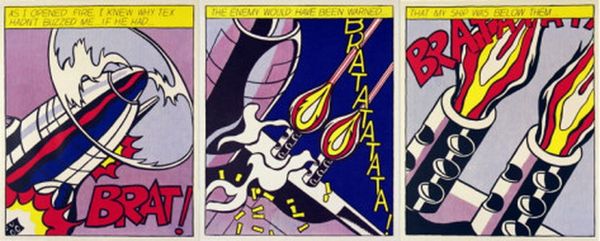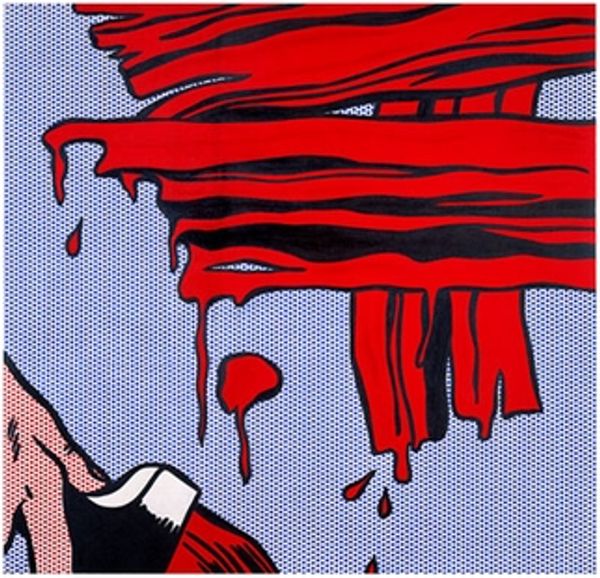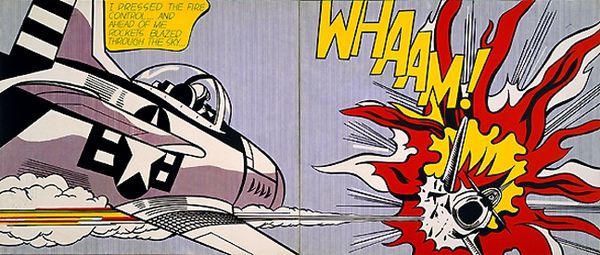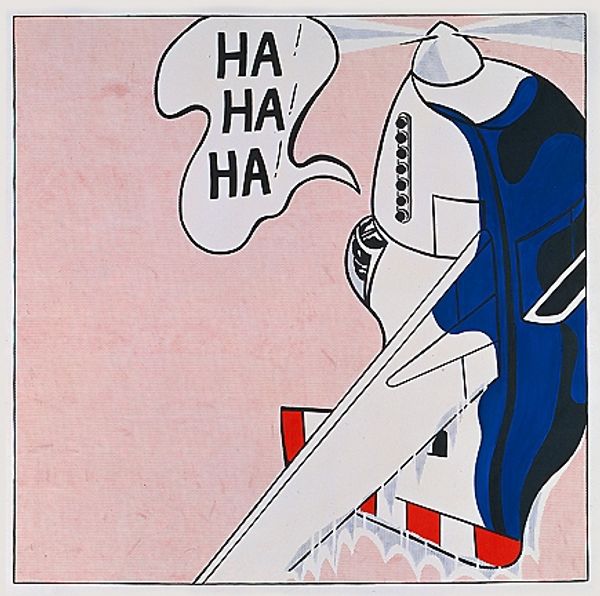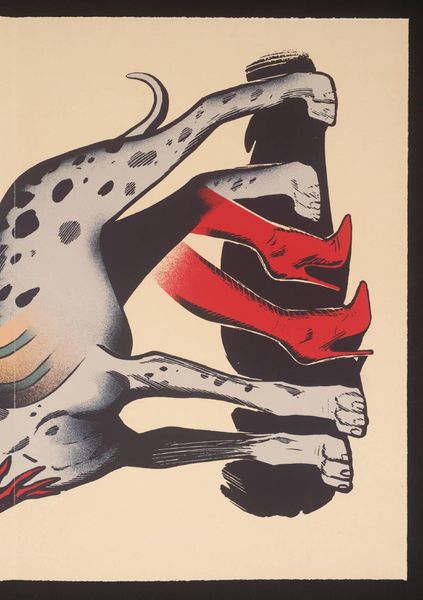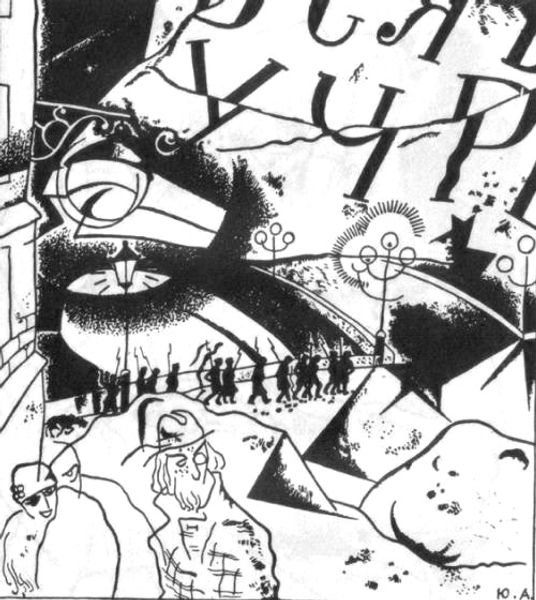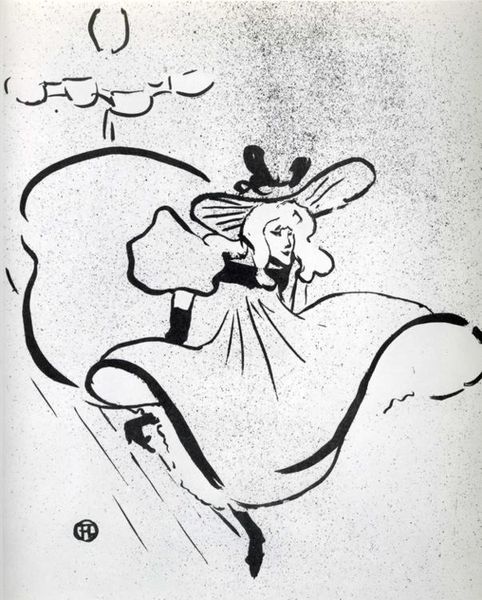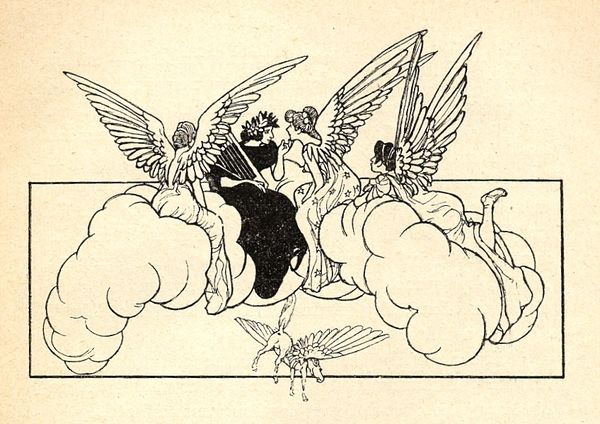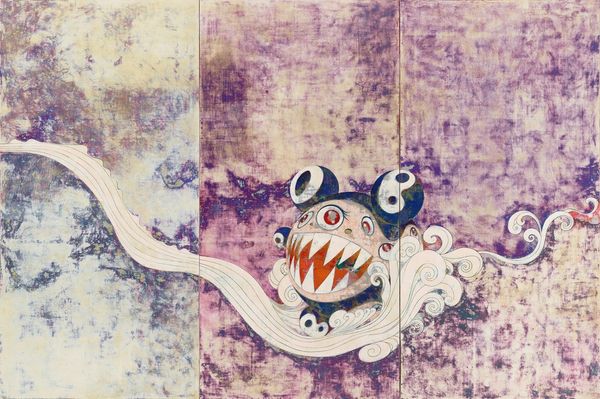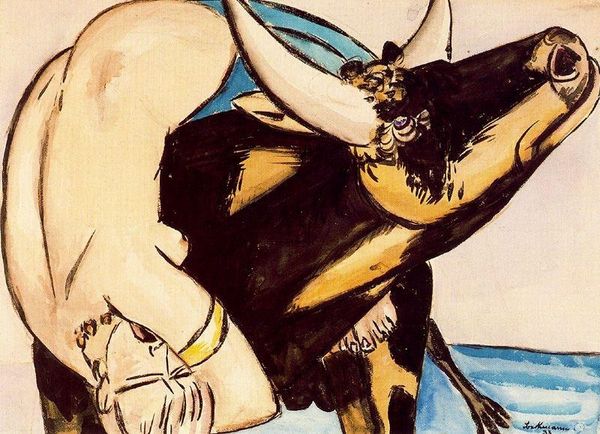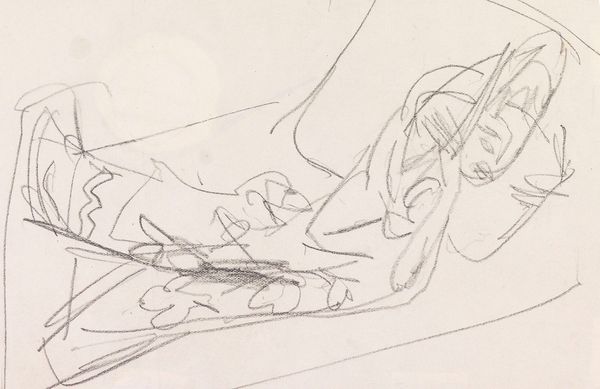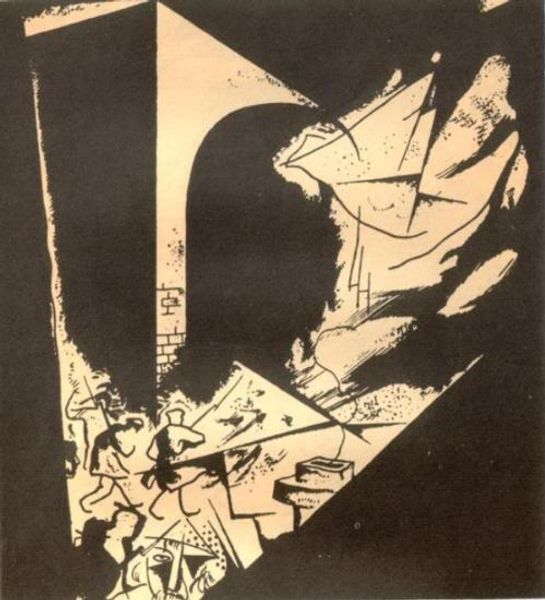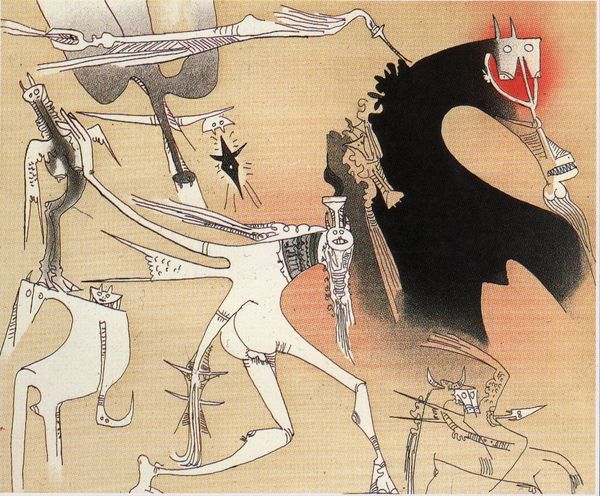
acrylic-paint
#
narrative-art
#
acrylic-paint
#
pop-art
#
cityscape
#
comic art
Copyright: Roy Lichtenstein,Fair Use
Curator: Let's take a look at Roy Lichtenstein's "Tex!" from 1962, executed in acrylic paint. Editor: It explodes off the canvas, doesn't it? Such dynamism, the composition directs the eye immediately from the sleek aircraft to the bursting reds and whites of the explosion. Curator: Absolutely, and its graphic impact pulls directly from its source material. Lichtenstein appropriated comic book panels, elevating what was considered low art to the realm of high art, but doing so through industrial methods. Notice the Ben-Day dots. They replicate the mechanical printing process of comics. Editor: The Ben-Day dots provide that wonderful sense of uniformity and flatness, crucial to his Pop aesthetic. How do you think the original comic contributes to our reading of it? Curator: The source comics served as a cultural artifact. These depictions of air combat were products of their time, reflecting and shaping attitudes towards war, heroism, and American power. The labor to transform it to this is minimal too, since the intention is reproduction rather than innovation. Editor: I find that flatness contributes to its reading and experience though, regardless of what you feel about the intent. The simplification of form, the bold outlines, give it an almost iconic presence that transcends the specifics of the narrative. It's almost like pure form; pure violence rendered graphically. Curator: But let's also consider that flatness not in isolation, but also as related to the economic process; It removes evidence of the artist's hand and pushes us to consider commodification of imagery. The artist isn’t doing too much except acting as an aesthetic mediator or middle man in its commodification, right? Editor: I can certainly appreciate that interpretation. But it does possess visual interest! As an aesthetic and affective tool, the flattening effect works in that the content is also emotionally flat – we see high octane action divorced from feeling; cold detachment rendered beautifully and graphically. Curator: And isn't that flatness a chilling commentary in itself, revealing much about societal attitudes that created the comics in the first place? Seeing through this makes it possible to assess our value judgements and societal values today. Editor: So, we’ve landed on the same conclusion from completely opposite directions; isn't art analysis fascinating?
Comments
No comments
Be the first to comment and join the conversation on the ultimate creative platform.
